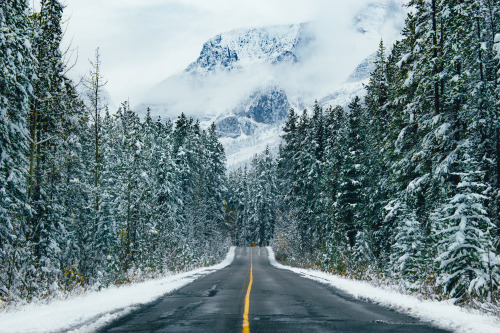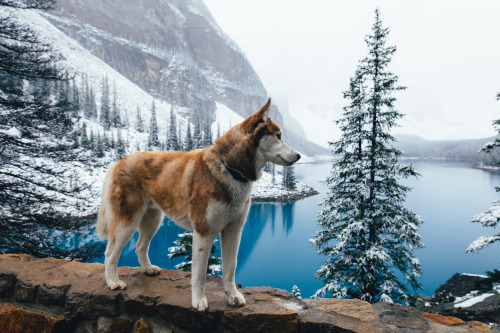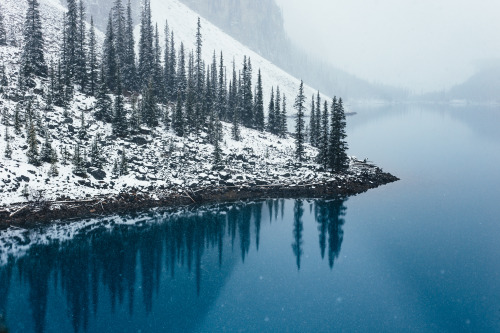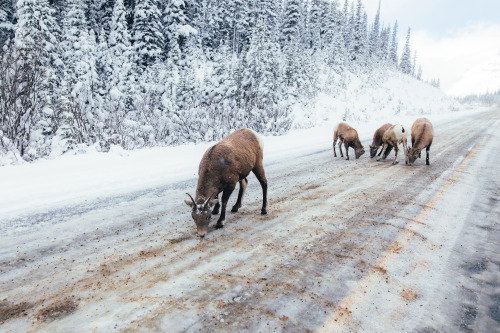Hunting For Organic Molecules On Mars
Hunting for Organic Molecules on Mars

Did Mars once have life? To help answer that question, an international team of scientists created an incredibly powerful miniature chemistry laboratory, set to ride on the next Mars rover.

The instrument, called the Mars Organic Molecule Analyzer Mass Spectrometer (MOMA-MS), will form a key part of the ExoMars Rover, a joint mission between the European Space Agency (ESA) and Roscosmos. A mass spectrometer is crucial to send to Mars because it reveals the elements that can be found there. A Martian mass spectrometer takes a sample, typically of powdered rock, and distinguishes the different elements in the sample based on their mass.

After 8 years of designing, building, and testing, NASA scientists and engineers from NASA’s Goddard Space Flight Center said goodbye to their tiny chemistry lab and shipped it to Italy in a big pink box. Building a tiny instrument capable of conducting chemical analysis is difficult in any setting, but designing one that has to launch on a huge rocket, fly through the vacuum of space, and then operate on a planet with entirely different pressure and temperature systems? That’s herculean. And once on Mars, MOMA has a very important job to do. NASA Goddard Center Director Chris Scolese said, “This is the first intended life-detecting instrument that we have sent to Mars since Viking.”

The MOMA instrument will be capable of detecting a wide variety of organic molecules. Organic compounds are commonly associated with life, although they can be created by non-biological processes as well. Organic molecules contain carbon and hydrogen, and can include oxygen, nitrogen, and other elements.

To find these molecules on Mars, the MOMA team had to take instruments that would normally occupy a couple of workbenches in a chemistry lab and shrink them down to roughly the size of a toaster oven so they would be practical to install on a rover.

MOMA-MS, the mass spectrometer on the ExoMars rover, will build on the accomplishments from the Sample Analysis at Mars (SAM), an instrument suite on the Curiosity rover that includes a mass spectrometer. SAM collects and analyzes samples from just below the surface of Mars while ExoMars will be the first to explore deep beneath the surface, with a drill capable of taking samples from as deep as two meters (over six feet). This is important because Mars’s thin atmosphere and spotty magnetic field offer little protection from space radiation, which can gradually destroy organic molecules exposed on the surface. However, Martian sediment is an effective shield, and the team expects to find greater abundances of organic molecules in samples from beneath the surface.

On completion of the instrument, MOMA Project Scientist Will Brinckerhoff praised his colleagues, telling them, “You have had the right balance of skepticism, optimism, and ambition. Seeing this come together has made me want to do my best.”
In addition to the launch of the ESA and Roscosmos ExoMars Rover, in 2020, NASA plans to launch the Mars 2020 Rover, to search for signs of past microbial life. We are all looking forward to seeing what these two missions will find when they arrive on our neighboring planet.
Learn more about MOMA HERE.
Learn more about ExoMars HERE.
Follow @NASASolarSystem on Twitter for more about our missions to other planets.
Make sure to follow us on Tumblr for your regular dose of space: http://nasa.tumblr.com.
More Posts from F-taser-blog and Others
best and also an intresting one:)


The First Irregular Moon Discovered on this Day!
On September 19, 1848, astronomers William Cranch Bond, George Phillips Bond and William Lassell discovered the first non-sperical, irregular moon orbiting the planet Saturn, which they named Hyperion (Ὑπερίων) after the Greek god/titan who was the brother of Cronus (the Greek equivalent of Saturn). Looking like a giant potato in the sky, Hyperion is the second largest non-sperical satellite discovered, measuring 360.2×266×205.4 km. Lassell and Bond both observed Hyperion independently of each other only days apart, and only a year after William Herschel had published Results of Astronomical Observations made at the Cape of Good Hope in which he suggested the name scheme for the first seven moons of Saturn, and which Lassell and Bond used when they proposed Hyperion.
Images of Hyperion courtesy NASA/Cassini
don't blame gravity for falling in love
albert einstine-bariny qoutes
Tudeww
"Real survival is in your mind and in your heart"
Bear grills
beautiful canda









First snow in the Canadian Rockies.
Banff and Jasper National Parks, Alberta, Canada. October 2016.
Well,well NASA just go and find some alien friends....(post by sci universe)

Well this is a bummer, but a good call considering how media is like 😄 NASA will host a teleconference at 2 p.m. EDT Monday, Sept. 26, to present new “surprising evidence” of activity from images captured by the Hubble Space Telescope.
Europa is thought to host an ocean of liquid water beneath its icy surface, and is thus considered to be one of the best places to search for alien life elsewhere in the Solar System.
If you want to know more about Europa, I recommend this infographic by space.com.
"don't blame gravity for falling in love"
Albert eienstine
10 Questions for Our New Head of Science
Guess what?! We have a new lead for our science missions, and we’re excited to introduce him to you. Recently, NASA Administrator Charles Bolden has named Thomas Zurbuchen as the new head of our organization for science missions. Let’s get to know him…
Zurbuchen was most recently a professor of space science and aerospace engineering at the University of Michigan in Ann Arbor. He was also the university’s founding director of the Center for Entrepreneurship in the College of Engineering.

Zurbuchen’s experience includes research in solar and heliospheric physics, experimental space research, space systems and innovation and entrepreneurship.
We asked him a few questions to see what he has in store for science at NASA…let’s take a look:
1. What is your vision for science at NASA?
Right now, I am focusing on my team and I am learning how I can help them achieve the goals we have; to design and build the missions we are currently working on. Once the presidential transition is complete, we will engage in strategic activity with that team. It has been my experience that the best ideas always come from great and diverse teams working together. I intend to do that here as well.
2. What solar system destination are you most eager for NASA to explore?
Tough question to answer. Basically, I want to go where there are answers to the most important questions. One question on my mind is the origin of extraterrestrial life. Some parts of the answer to this question can be answered at Mars, some at Europa or other moons in the outer solar system like Enceladus. Other parts of the answer is around other stars, where we have found thousands of planets…some of which are amazingly similar to Earth!

3. With raw images posted to several websites from our missions, what’s one thing you hope members of the public can help NASA do with that powerful data?
I hope that people all over the world play with the data and find new ways to explore. It’s almost like hanging out in the most amazing libraries talking about nature. Many of the books in this library have never been opened and curious minds can find true treasures in there. I know that there are over a billion data-products NASA is making available about the Earth – it’s a treasure chest!
4. In your opinion, what big science breakthrough from the past informs missions of today?
In science, everything we do builds on successes and also failures of the past. Sometimes we forget our failures or near-failures, which tend to teach us a lot about what to do and what not to do. One of my favorite stories is about the Explorer 1 mission: first they observed almost nothing, until they realized that there was so much radiation that the detectors were chocking. The Van Allen Probes is a mission that are conducting the best exploration today of these radiation belts, discovered by Explorer 1. Our exploration history is full of stories like that.

5. Behind every pretty space image is a team of scientists who analyze all the data to make the discovery happen. What do you wish the public knew about the people and work that goes into each of those pretty pictures?
I wish people knew that every picture they see, every data-set they use, is a product of a team. One of the most exhilarating facts of working in space is to be able to work in teams composed of some of the nicest and most interesting people I have ever met. There are some super-famous people I run with every time we are in the same town, others who like to play music and listen to it, and some who have been in space or climbed mountains.
6. If you were a member of the public, what mission events in the next year would you be most excited about?
The public’s lives will be directly affected by our missions in our Earth Science portfolio. Some of them are done together with NOAA, our sister agency responsible for forecasts. For example, GOES will feature a lightning detector that will enable better predictions of storms. We are also launching CYGNSS in December. This NASA mission, composed of 8 spacecraft will provide unique and high-resolution data designed to provide a deeper understanding and better prediction for hurricanes globally.

7. NASA science rewrites textbooks all the time. What do you hope the kids of tomorrow will know as facts that are merely hypothesis today?
I hope they will know about life elsewhere. They will learn how life evolves, and where there is life today.
8. NASA has explored planets within our solar system. With the launch of the James Webb Space Telescope in 2018, what do you hope we learn about distant worlds?
James Webb is going to allow us to go back in time and look at the first stars and first galaxies. This is something we have never seen – we can only guess what will happen. James Webb is going to allow us to look at many, many more planets around other stars and will allow us to start doing the kind of research that links to the question about how habitable life is there.

9. What sort of elements make for an exciting new science discovery? What do you hope is the next big discovery?
Almost always, an exciting discovery is a surprise. Sometimes, discoveries happen because we are looking for something totally different. The biggest discoveries are the ones that change everything we thought before. All of a sudden, nature wags the finger at us and says “you are wrong!” That is how you know you are up to something new.
I hope the next big discovery tells us about the origin of the 95% of the universe we don’t know enough about. We call these 95% “Dark Energy” and “Dark Matter”, but – to be honest – we really don’t know. So, we are today living in a time where we know with 100% certainty that we don’t know what makes up 95% of our universe.
10. In your opinion, why should people care about the science at NASA?
They should care because we improve and protect lives on Earth. They should also care because we make the world we live in bigger. This is because we find things out we never knew, which creates new opportunities for humankind. Some of these opportunities are near-term – they are patents, innovations, companies or great educations. But, some of them are long-term – they change how we think about life itself.
Stay updated on science at NASA and Dr. Thomas Zurbuchen by following him on Twitter: @Dr_ThomasZ
Make sure to follow us on Tumblr for your regular dose of space: http://nasa.tumblr.com

That's true
-
 thehomosexualplant liked this · 3 years ago
thehomosexualplant liked this · 3 years ago -
 riceli liked this · 4 years ago
riceli liked this · 4 years ago -
 sakurazero10 liked this · 4 years ago
sakurazero10 liked this · 4 years ago -
 mxlovey32 liked this · 4 years ago
mxlovey32 liked this · 4 years ago -
 krummelhund liked this · 4 years ago
krummelhund liked this · 4 years ago
